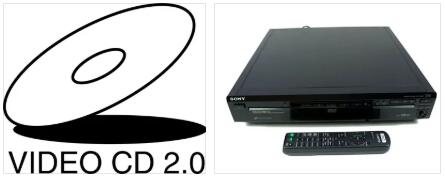
Standing for Video Compact Disc, VCD is a standard that plays videos from a CD. The audio and video data that are in VCD format are encoded in the MPEG-1 standard. Generally, audio from a VCD is recorded in Dolby Digital Surround format. The quality of the video is similar to the quality of VHS recordings. VCD also stands for Vacuum Constriction Device, explained by AbbreviationFinder.
In the Video Compact Disc, the data is recorded in a standard way in order to guarantee reading and reproduction in other devices capable of reproducing the VCD format, as is the case of most current DVD players on the market.
The advantage of VCDs compared to VHS recordings is that the quality of the audio and video files on the Video Compact Disc does not deteriorate over time. This made several manufacturers bet on the model and several companies adopted this format for recording films and music videos.
Even though new technologies for video and audio reproduction have gained more and more space on the market, the VCD standard is still popular in Asia and used worldwide. With the release of version 2.0, the model gained more strength, as it presented improvements to keep up with technological advances. Due to the versatility and economical nature of the technology behind the format, VCDs have everything to last for several years.
Version 1.1 of the VCD standard was created in 1993 and launched commercially later this year in the United States, Europe and Japan. Version 2.0 appeared on the market in 1995, with a slightly improved resolution compared to its predecessor, in addition to presenting the system PAL.
The VCD was a bet to try to establish a digital standard for films, after the Laserdisc attempt. At the time of its release, many VCD players were available to be sold in stores, however, the model did not catch, due to the deficiencies presented, such as the ease of copying discs that had no protection system. Especially in the West, the format began to fall out of favor and was rejected by consumers and the film industry, which saw no significant benefits from using the format to promote their products. One of the few films released by the major cinema companies in the VCD format was the renowned Top Gun.
With VCD Players failing to sell, the West soon reinvented itself and launched a new format – DVD, in 1996, which would further bring down VCD technology. However, that was not yet the end of the pattern.
In Asia, especially in China, the VCD has succeeded and has become the main source for commercializing films. The VHS format was quickly replaced by the VCD during the 1990s. Movies were re-released in the new format, popularizing VCD players and MPEG-1 players for PCs.
With the increase in the use and transport of files and data, the VCD returned to gain strength in the late 90s. It established itself as a small and fast way to store films. DVD players have boosted the use of VCDs because they support the format, which was still widely used until the middle of the last decade.
